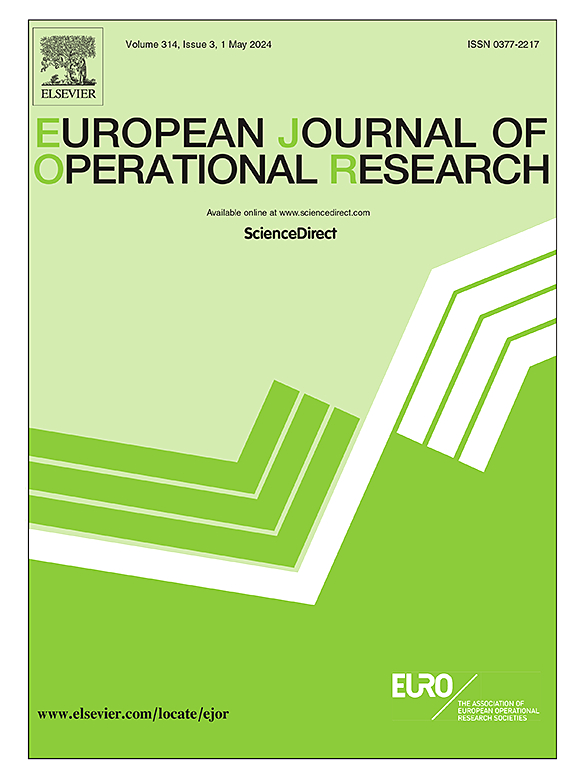退化触发作业到达的调度和路由:无人驾驶飞行器舰队在森林消防中的应用
IF 6
2区 管理学
Q1 OPERATIONS RESEARCH & MANAGEMENT SCIENCE
引用次数: 0
摘要
我们定义了一个交织在一起的调度和路由问题,其中由于现有作业的退化而出现新作业。具体来说,一旦一份工作到达一个潜在的工作地点,一个可以满足工作需求的时间窗口就开始了。需求在时间窗口内下降,一旦超过特定的阈值,就会触发新工作的到来。每个作业位置固有地具有初始默认奖励,并且在某个位置存在未处理的作业会逐渐减少该默认值。总体目标是最大化剩余的总奖励。这个问题的潜在动机与谚语“一针及时省九针”一致,这个问题本身也有实际意义。我们在森林空中灭火的背景下关注这个问题。每个被点燃的区域都有一个指定的行动窗口;拖延干预会导致火势扩大,降低该地区的价值,并导致火势蔓延到邻近地区。我们建立了一个混合整数规划模型,以最大化野火威胁地区的价值保留,并建立了一个基于动态约束生成的混合模型,以增强模型的可扩展性。我们通过计算实验和案例研究来评估我们的模型的性能和实用性。此外,我们确保研究的可重复性,并通过提供对我们模型代码库的开放访问来鼓励进一步的研究。本文章由计算机程序翻译,如有差异,请以英文原文为准。
Scheduling and routing with degradation-triggered job arrivals: An application to forest firefighting with an unmanned aerial vehicle fleet
We define an intertwined scheduling and routing problem where new jobs appear due to the degradation of the existing jobs. Specifically, once a job arrives at a potential job location, a time window begins during which the demand of the job can be fulfilled. The demand degrades within the time window, and once it surpasses a particular threshold, it triggers the arrival of new jobs. Each job location inherently possesses an initial default reward, and the presence of an unprocessed job at a location gradually reduces this default value. The overall objective is to maximize the total remaining reward. The underlying motivation of this problem aligns with the proverb “a stitch in time saves nine,” and the problem itself carries practical implications. We focus on the problem in the context of aerial forest firefighting. Each ignited area has a designated action window; delaying intervention causes the fire to grow, diminishing the area’s value and causing it to spread to adjacent areas. We develop a mixed-integer programming model that maximizes value retention in wildfire-threatened regions, and a hybrid model based on dynamic constraint generation to enhance the scalability of the model. We evaluate the performance and practicality of our models through computational experiments and a case study. Additionally, we ensure the study’s reproducibility and encourage further research by providing open access to the codebase of our model.
求助全文
通过发布文献求助,成功后即可免费获取论文全文。
去求助
来源期刊

European Journal of Operational Research
管理科学-运筹学与管理科学
CiteScore
11.90
自引率
9.40%
发文量
786
审稿时长
8.2 months
期刊介绍:
The European Journal of Operational Research (EJOR) publishes high quality, original papers that contribute to the methodology of operational research (OR) and to the practice of decision making.
 求助内容:
求助内容: 应助结果提醒方式:
应助结果提醒方式:


